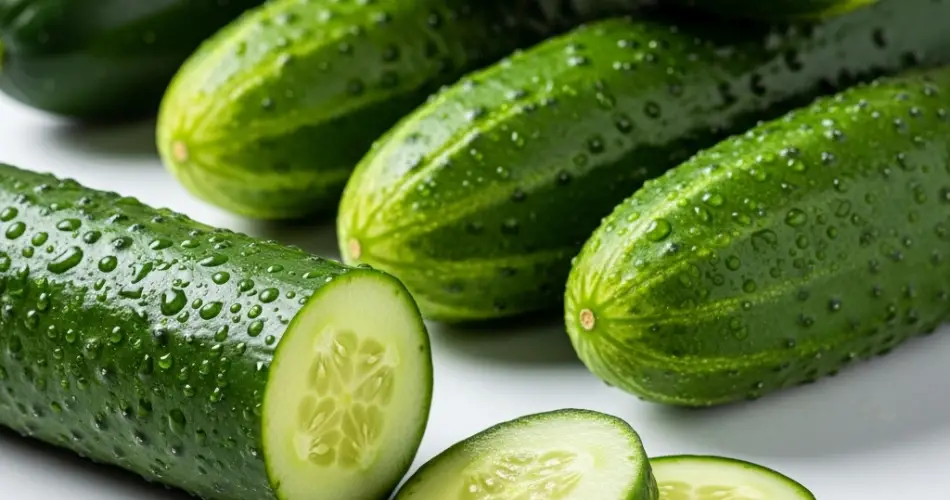Cucumbers are one of the most rewarding vegetables to grow in the home garden. Fast-growing and highly productive, they can provide a continuous harvest all summer long—if they’re given the right care from the start. However, many gardeners struggle with issues like stunted growth, yellowing leaves, or disease-prone fruits. Fortunately, there’s a simple and effective technique that can dramatically boost your cucumber yield while keeping the plants healthy and disease-free.
The Key: Early Strength and Soil Health
If you want your cucumber plants to produce abundantly, you need to focus on building two things: strong roots and balanced soil. Cucumbers are heavy feeders and need a steady supply of nutrients and moisture to grow quickly and fruit heavily. Without these essentials, the plant becomes vulnerable to fungal diseases, poor fruit development, and a short growing season.
The good news is, by giving your plants a powerful, natural boost early on, you can set them up for a long and productive life in the garden.
The Secret: A Homemade Nutrient Tonic for Cucumbers
One of the best ways to prepare cucumber plants for success is to feed them a homemade organic tonic that enhances root development, strengthens immunity, and fuels rapid growth. This simple mix includes ingredients most gardeners already have and delivers everything cucumbers need to thrive.
What You’ll Need:
-
1 tablespoon of baking soda
-
1 tablespoon of hydrogen peroxide (3% solution)
-
1 tablespoon of liquid soap (mild, biodegradable)
-
1 liter of warm water
Instructions:
-
In a bucket or watering can, combine the warm water with baking soda and stir until dissolved.
-
Add the hydrogen peroxide and soap, mixing gently.
-
Use this mixture to water the soil around your cucumber plants, preferably in the early morning or late afternoon to avoid leaf burn.
Apply this solution once every 10–14 days throughout the growing season.
Why This Works
This combination delivers multiple benefits to cucumber plants:
-
Baking soda helps to neutralize fungal spores in the soil and on plant surfaces, reducing the risk of powdery mildew, downy mildew, and other common cucumber diseases.
-
Hydrogen peroxide boosts root oxygenation and kills harmful soil pathogens, making the roots more efficient at absorbing nutrients and water.
-
Liquid soap acts as a surfactant, helping the solution stick to leaves and penetrate the upper soil layer for better results.
When used together, these ingredients support strong root systems, healthy foliage, and increased flowering—all leading to a heavier fruit set.
Support with Regular Care
While this tonic can significantly enhance cucumber plant health, it should be paired with good gardening practices to maximize results:
1. Mulch the Base
Mulching with straw, dried grass clippings, or compost helps retain moisture, suppress weeds, and regulate soil temperature—all crucial for cucumber growth.
2. Water Deeply
Cucumbers need consistent watering, especially during flowering and fruiting. Water deeply 2–3 times a week, depending on weather conditions. Avoid wetting the leaves to reduce the risk of fungal infection.
3. Use Natural Fertilizers
Supplement your feeding schedule with organic matter such as compost tea, diluted fish emulsion, or banana peel tea. These options are rich in potassium, nitrogen, and phosphorus—essential for flowering and fruit development.
4. Provide Vertical Support
Cucumbers grow best when trained vertically. Using a trellis or netting improves air circulation, reduces disease, and keeps fruits off the ground, making them less susceptible to rot.
Watch for Early Signs of Disease
Even healthy cucumber plants can be vulnerable to pests and pathogens if not monitored regularly. Here are common issues and what to do:
-
Powdery mildew: White powdery patches on leaves—treat with baking soda solution as mentioned above.
-
Yellowing leaves: Often caused by nutrient deficiency or overwatering. Check soil drainage and fertilize with a balanced organic feed.
-
Distorted or bitter fruit: Often due to inconsistent watering or heat stress. Maintain even moisture and shade the plants slightly during intense midday heat.
Harvesting Tips for Maximum Yields
To encourage your plants to keep producing, harvest cucumbers regularly—every 2–3 days during peak season. Don’t let fruits become overripe, as this signals the plant to stop producing new ones. Use scissors or pruners rather than pulling the fruit to avoid damaging the vines.
Final Thoughts
By taking just a few extra steps early in the growing season, you can set your cucumber plants up for abundant yields and excellent health. The combination of natural tonics, consistent care, and preventative practices will keep diseases at bay and your harvest basket full.
Whether you’re a beginner or an experienced gardener, applying this method now will pay off in just a few weeks with crisp, green cucumbers that are full of flavor and free from disease.



